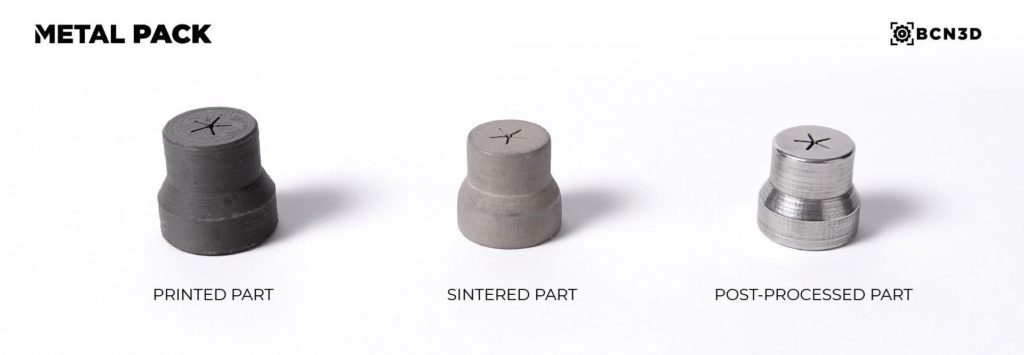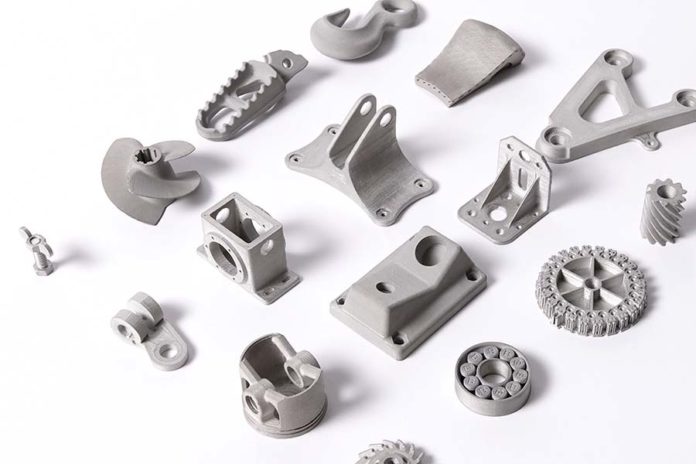Stainless Steel 3D printing increasingly becomes accessible to those who cannot afford to buy a Binder Jetting 3D printing system, a WAAM system or any metal 3D printing technology that can process this material. The alternative solution for fabricating metal parts with a non-metal AM technology is a metal filament. One of the well-known materials producer that has developed metal filaments for metal 3D printing applications is BASF Forward, a company that has just partnered with 3D printer manufacturer BCN3D. The Spanish company recently unveiled its Metal Pack containing Ultrafuse® Metal Filaments from Forward AM.
The metal filaments can be processed by BCN3D’s Epsilon Series 3D printers and follows the release of BCN3D Cloud and purchase of software company Astroprint.
The Metal Pack includes both Ultrafuse® 316L and 17-4 PH, and a new exclusive hotend for metal, as well as specific accessories, to ensure a smooth printing experience. After the printing process, debinding and sintering processes can be done externally through the current Forward AM authorized network of service suppliers, BCN3D states in a press release.
“Ultrafuse® Metal Filaments portfolio has been developed based on BASF´s decades of know-how coming from the Metal Injection Moulding (MIM) industry. Filaments are designed for ultimate ease of handling and can be used on any open-source Fused Filament Fabrication (FFF) printer”, Firat Hizal, Head of Metal Systems Business Group at BASF 3D Printing Solutions GmbH reminds.
How does the process work?
The process is divided into 3 steps: printing a part with the BCN3D Epsilon 3D printers, and the subsequent industry-standard debinding and sintering, done externally through the current Forward AM authorized network of suppliers. The result is a final part which is nearly 100% solid stainless steel.

For the printing process, filaments Ultrafuse® 316L and 17-4 PH contain high levels of stainless steel in combination with polymer binders which allows for easy printing. The binder content from the printed part is removed in a catalytic debinding process. The next step is the part undergoing a subsequent sintering process at temperatures right below the melting temperature of the metal which causes the metal particles to coalesce. The material then reaches its final properties through post-sintering. For example, achieving required performances in aspects such as hardness and strength.
“The whole AM industry is chasing metal 3D printing. But the truth is that, nowadays, affordable available solutions, if any, are very scarce. With the release of the Metal Pack at BCN3D, we are excited to leverage BASF’s decades of experience in MIM technology applied to metal extrusion and post-processing. In combination with our existing 3D printing ecosystem, it becomes an end-to-end and accessible solution for functional prototyping. Our customers will be able to take the best advantage of 3D printing by obtaining industry-grade metal parts, within days and hassle-free”, Eric Pallarés, CTO of BCN3D states.
The Metal Pack will include one Ultrafuse® 316L (3kg) spool and one Ultrafuse® 17-4PH (3kg), the Magigoo 316L which is also compatible with the 17-4PH, two new Hotend M’s and the new BCN3D Brass Wipers for Metal. BCN3D will also publish an add-on for new slicing software BCN3D Stratos dedicated to printing with metal that will include printing profiles curated for the BCN3D Epsilon Series.
Remember, you can post job opportunities in the AM Industry on 3D ADEPT Media free of charge or look for a job via our job board. Make sure to follow us on our social networks and subscribe to our weekly newsletter : Facebook, Twitter, LinkedIn & Instagram ! If you want to be featured in the next issue of our digital magazine or if you hear a story that needs to be heard, make sure to send it to contact@3dadept.com






